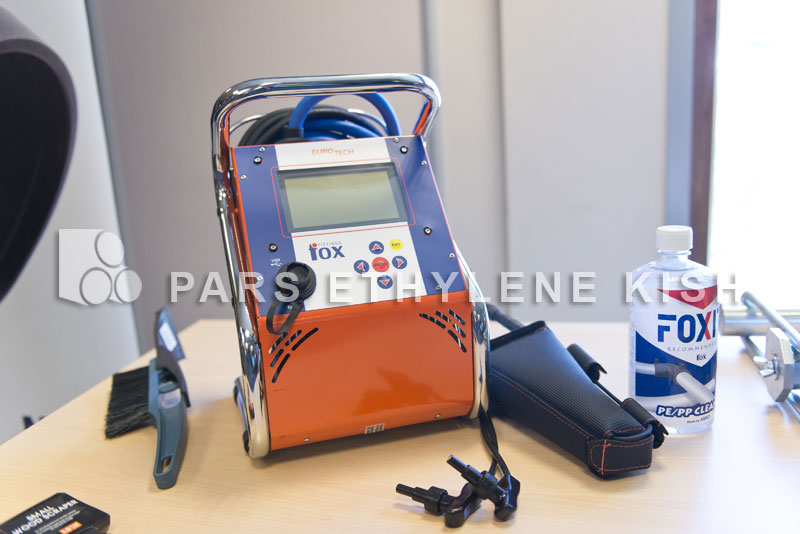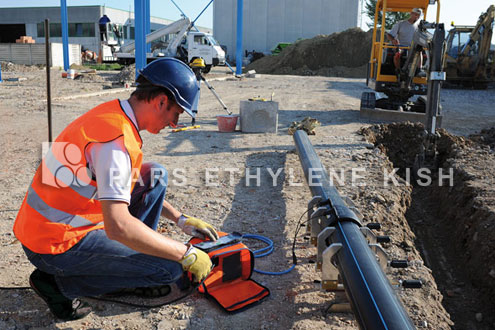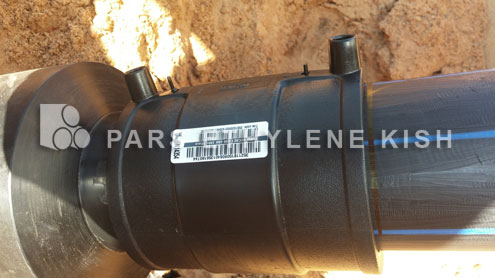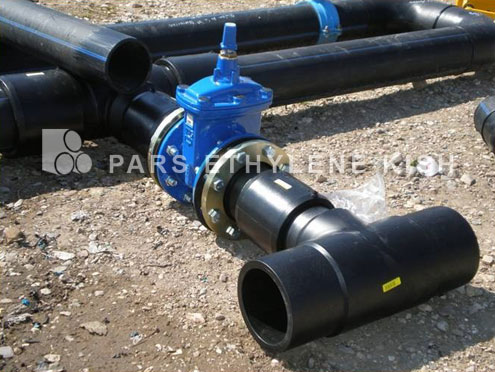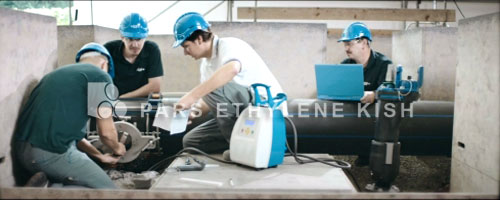
Electrofusion Welding Guid and Training
What is ElectroFusion Welding?
Electrofusion Fittings are a variety of fittings that can be used in gas pipelines and water supply lines. Electrofusion Fittings are a heat treatment method compared to butt fusion methods and are used to generate heat. Electrofusion welding is a type of pipe welding and polyethylene fittings, in which there are special connections that have electrical resistance wire to create welding melting temperatures. The electric current is transmitted through the electrofusion welding device and through the control box to the two ends of the connection. As in the case of thermal fusion welding (butt), a variety of saddle and socket fittings are also used in the electrofusion process. The electrofusion welding process is the same for most electrofusion joints. Due to its high immunity, this method is the only type of connection approved for IGS standard for gas transmission lines.
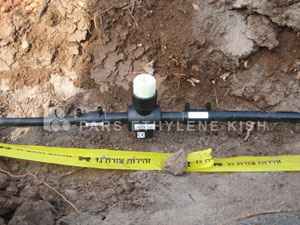 Electrofusion welding does not limit the size of the polyethylene bottle boil method for connecting a tube of similar size. Also, experience has shown that the connection of polyethylene pipes with different polyethylene types is also possible. Along with its safety, the other benefits of this method are connectivity at high speed and cleanliness. But on the other hand, the limitation of this method at high cost and maximum diameter of the pipe can be connected with this method. Electrofusion fittings due to its high coefficient of reliability are commonly used in gas distribution networks for polyethylene pipes and are economical for pipes of 20 to 250 mm in diameter.
Electrofusion welding does not limit the size of the polyethylene bottle boil method for connecting a tube of similar size. Also, experience has shown that the connection of polyethylene pipes with different polyethylene types is also possible. Along with its safety, the other benefits of this method are connectivity at high speed and cleanliness. But on the other hand, the limitation of this method at high cost and maximum diameter of the pipe can be connected with this method. Electrofusion fittings due to its high coefficient of reliability are commonly used in gas distribution networks for polyethylene pipes and are economical for pipes of 20 to 250 mm in diameter.

Electrofusion welding tips
-
- Electrofusion installation should only be carried out by personnel trained and qualified for electrophobic welding.
-
- Use calibrated tools
-
- Clean the pipe with materials recommended by the manufacturer only
-
- Fully cover the thermal element of the fittings
Electrofusion welding is performed automatically. The connection points must not be moved at least 10 minutes after welding. The pipe surface before welding must be carefully inspected to avoid any scratches, because scratches cause leakage at the joints.
The important point to note in this method of connection is that for welding, it must be used with a device whose electrical current corresponds to the electrical couplings of the connections.
Electrofusion Fittings are packaged in a plastic protective cover and must be packed up until they are used. This plastic cover can be used during installation to prevent contamination. Fittings should be kept in a store where the temperature should not exceed 50 ° C. Never expose fittings to direct sunlight. Electrofusion Fittings may contain a black carbon additive to protect against UV light effects, however, improper maintenance can have a negative effect on the performance of the connections.
Always check that the connection is not physically damaged during storage before starting the electrofusion installation and welding process. If necessary, an evaluation of the fittings is recommended by performing a destructive test on the sample, which allows for the determination of any surface degradation. Before scratch, mark the area with the marker. So, after scratching, the marking pipe marked with the marker will not be visible.
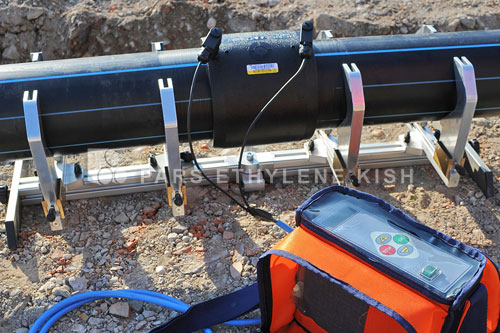
Performing electrofusion welding
The use of suitable and specific tools for the success of electrofusion welding is essential. It is always advisable to check all the necessary equipment before starting welding. Make sure all the equipment that needs calibration is calibrated. Equipment may vary, depending on the product under welding or the diameter to be welded, to some extent, but should include:
-
• Measuring instruments (tubes, meters, etc.)
-
• Pipe cutting equipment
-
• Pencil or marker
-
• Scratch tool
-
• Cleaner, make sure the napkin is soaked with alcohol (not dry).
-
• Special Wrenches
-
• Tube holder tool
-
• Fusion equipment
-
• Generator: The generator must be suitable for operation and can supply the required power
-
• Electrofusion control box with suitable conductors, bar code reader (not on manual boxes and sufficient output power

Electrofusion welding steps
-
1-Measure the diameter of the pipe.
-
2 - Choose the right connections.
-
3- Cut the pipe straight.
-
4-Measure and mark the area that should be removed from the thickness of the tube (Scraping).
-
5- Reduce the thickness of the pipe in the weld area (Scrap).
-
6- Clean the welding area with a suitable liquid approved by the manufacturer.
-
7- Check the depth of the fitting location.
-
8- Insert the pipe into the fasteners and place the fitting on it.
-
9- Read the barcode on the connections using the barcode reader.
-
10- Make adjustments in accordance with the requirements of the car.
-
11- Start welding.
-
12- Remove the pressure test from the pipeline.
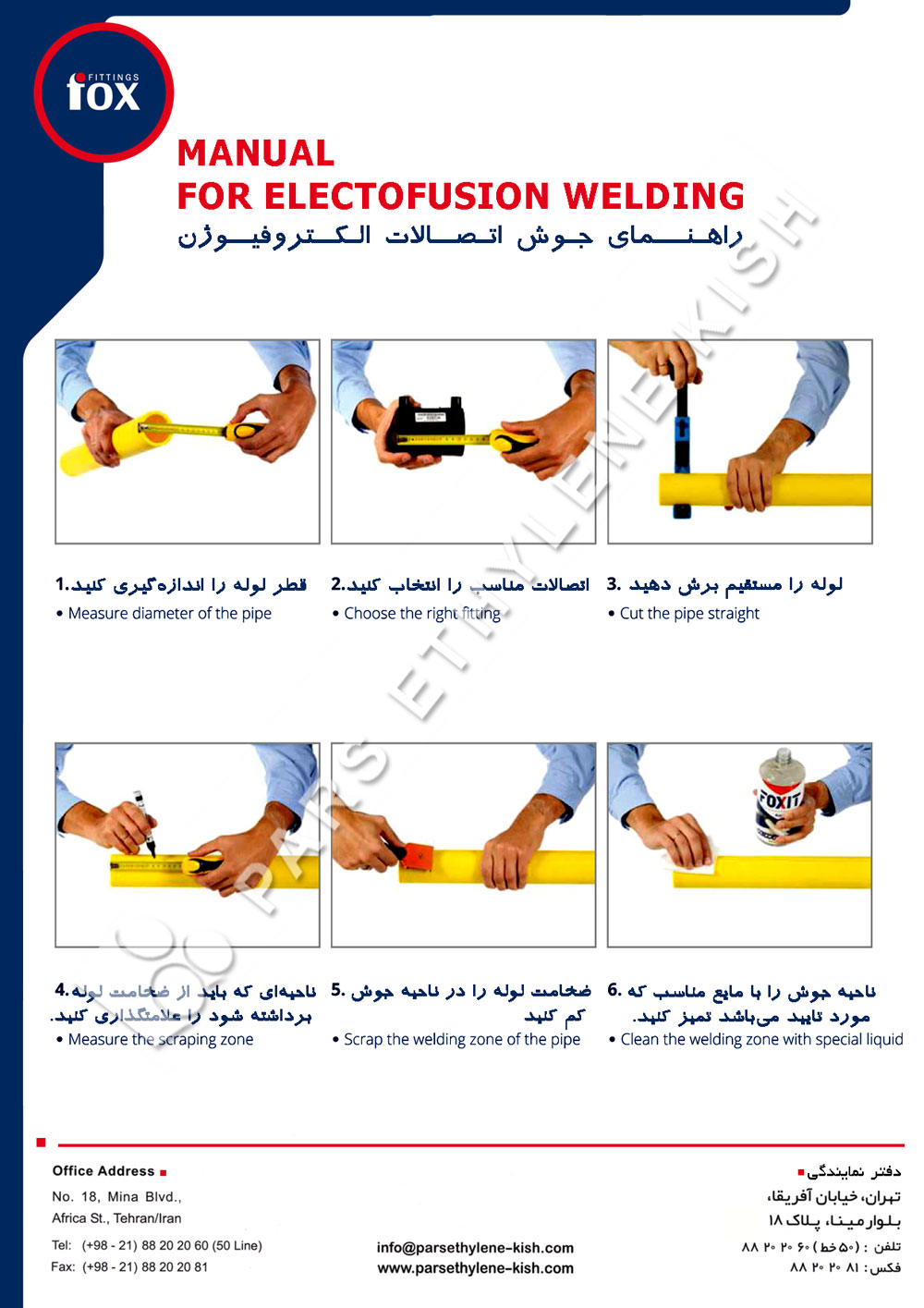
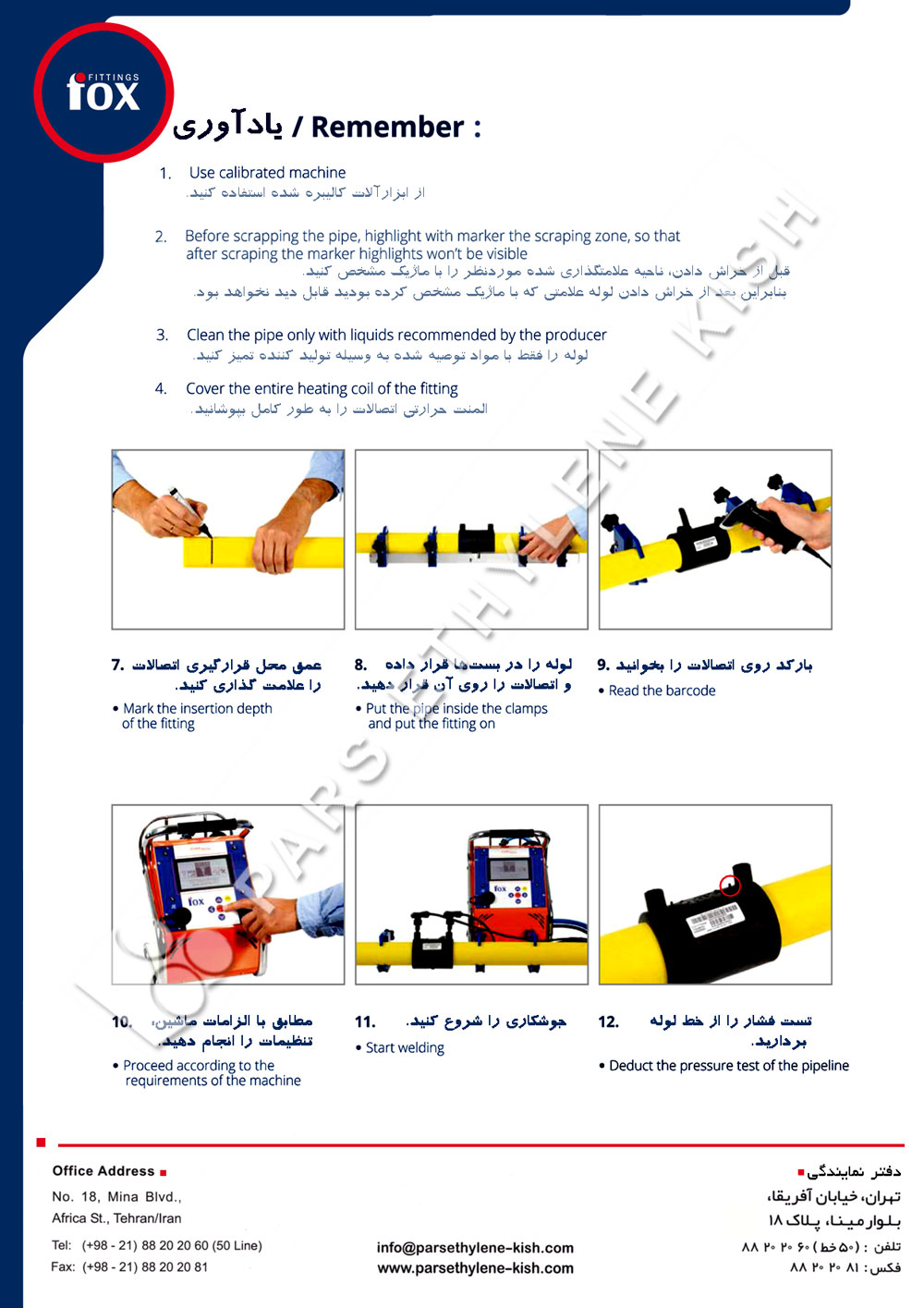
Electrofusion welding guide
In electrofusion welding, it is necessary to observe the following points:
-
1-Heat distribution uniformly during boiling.
-
2- The temperature and pressure of the melted part must be carefully controlled.
-
3- Avoid damaging the coil of the coupler.
-
4.- The necessary protection before, during and after the connection is necessary.
-
5- Take the proper time to electrofusion.
-
6- The tube is cut perpendicular to its axis and the roughness is cleaned with a flat sheath and a tube duct.
-
7- Clean any dirt from the pipe.
-
8- Make a connection piece in place and check for cleanliness.
-
9 - Shaved parts of the pipe should be cleaned with suitable materials. (Such as isopropanol)
-
10- For each connection of this type, the use of the clamp is necessary to maintain the connection set.
-
11- Due to the characteristics required in terms of voltage and welding time, necessary controls are required.
-
12 - The connection system inside the clamp until it remains fully seamless.
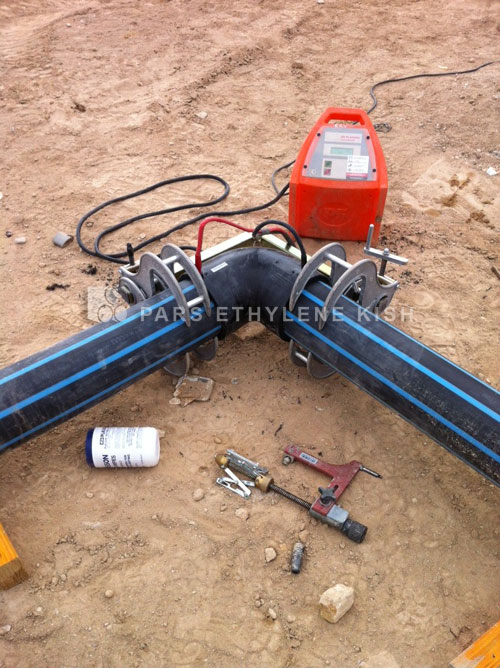
Electrofusion welding or butt fusion
There are several factors that influence the decision on using a fusion butt or an electrofusion welding for connecting pipes and polyethylene fittings.
Accessibility: Electrofusion is suitable especially for use in areas where access is difficult, for example, in trenches.
Tube Size: Electrofusion is available for pipes of 16 to 710 mm in size, while the butt fusion can be used for tubes of 50 to 2000 mm in size.
Pipe Materials: Electrofusion can be used to connect different grades of a medium such as polyethylene of medium density to high density polyethylene.
Pipe structure: While in the fusion butt, the tubes to be connected must have the same thickness, in the electrofusion, the difference in the thickness of the wall does not cause problems. Electrofusion can also be used to connect certain types of multi-layer pipes, such as a nylon-coated polyethylene pipe to transport fuel.
Installation method: If the polyethylene pipe should be installed using a drilling technique , then no electrofusion can be used. Similarly, if the tube should be used as a tight cover in an existing pipeline, the fusion butt is the only technique.
